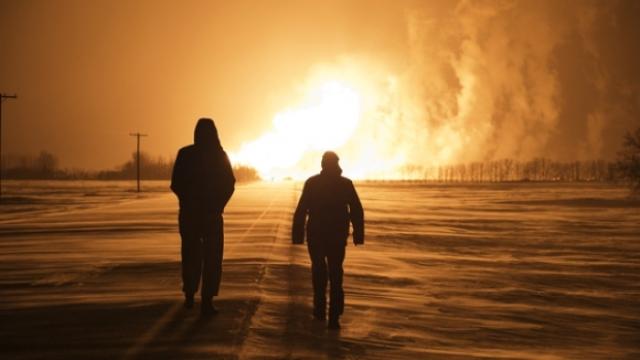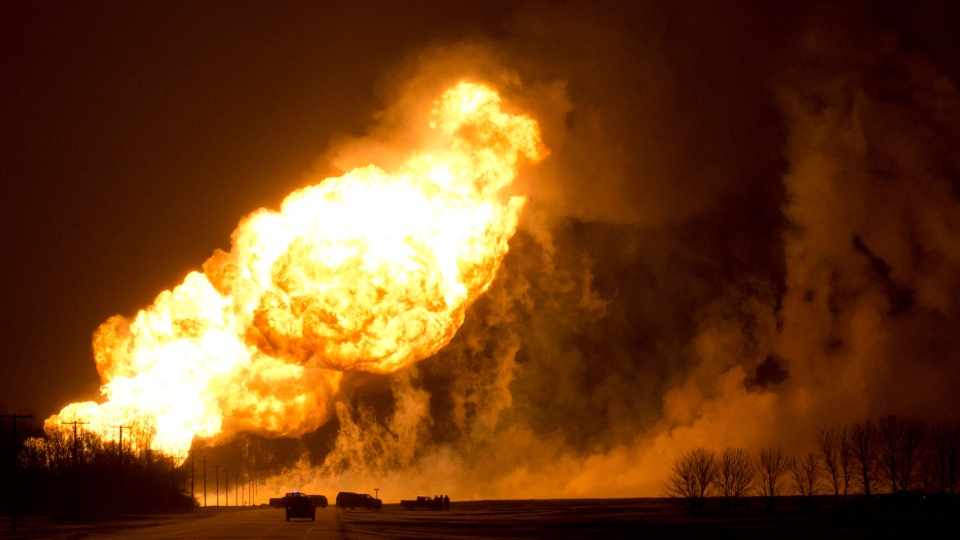
Photo: Jordan McRae
A natural gas pipeline operated by TransCanada Corp. exploded and caught fire in the Canadian province of Manitoba on Saturday, shutting off gas supplies for as many as 4,000 residents in sub-zero temperatures.
“We could see these massive 200- to 300-meter high flames just shooting out of the ground and it literally sounded like a jet plane,” resident Paul Rawluk told the Canadian Broadcasting Corp.
There were no injuries and the area was evacuated as a precaution, according to the National Energy Board. TransCanada said the fire was extinguished by Saturday afternoon, more than 12 hours after it started, but in order to repair the line, they shut off the natural gas supply to several municipalities.
Temperatures dropped to -20 degrees Celsius overnight.
Niverville Deputy Mayor John Funk said that “service is expected to be lost for minimum of 24 hours to multiple days” in a statement on the town’s website. Funk also said that “Manitoba Hydro is asking residents to turn down thermostats and minimize use of electric heaters.”
There is no timeline for restoring regular natural gas services so in the interim, compressed natural gas is being trucked in to the area. “The initial supply will be used to provide gas to critical services such as personal care homes and hospitals, as well as schools or churches being used as emergency warming centers,” the CBC reported.
TransCanada has also been pushing for the approval of its controversial Keystone XL pipeline to transport Canadian tar sands to refineries on the U.S. Gulf Coast. Oil began flowing through the southern leg of the pipeline this week and in a conference call marking the announcement, CEO Russ Girling called Keystone XL “the safest oil pipeline built in America to date.”
As of November, TransCanada had already fixed 125 sags and dents in the southern leg of the pipeline, according to a report by non-profit consumer rights group Public Citizen. And while Girling told reporters on this week’s conference call that the company had “voluntarily agreed” to 57 conditions with the Pipeline and Hazardous Materials Safety Administration (PHMSA), Jeffrey Weise, the agency’s head of pipeline safety, said last year that his agency “has very few tools to work with” and as a result, the regulatory process he oversees is “kind of dying.”
Indeed, a Wall Street Journal analysis released this week found that people discover pipeline spills far more often than the leak-detection technology touted by companies. Based on PHMSA data for 251 pipeline incidents over four years, the WSJ found that nearby residents or company employees were nearly three times as likely to detect a pipeline leak. Leak-detection software, special alarms and 24/7 control room monitoring, on the other hand, discovered leaks just 19.5 percent of the time.
Originally published by Think Progress
Photos by Jordan McRae
3 WAYS TO SHOW YOUR SUPPORT
- Log in to post comments












